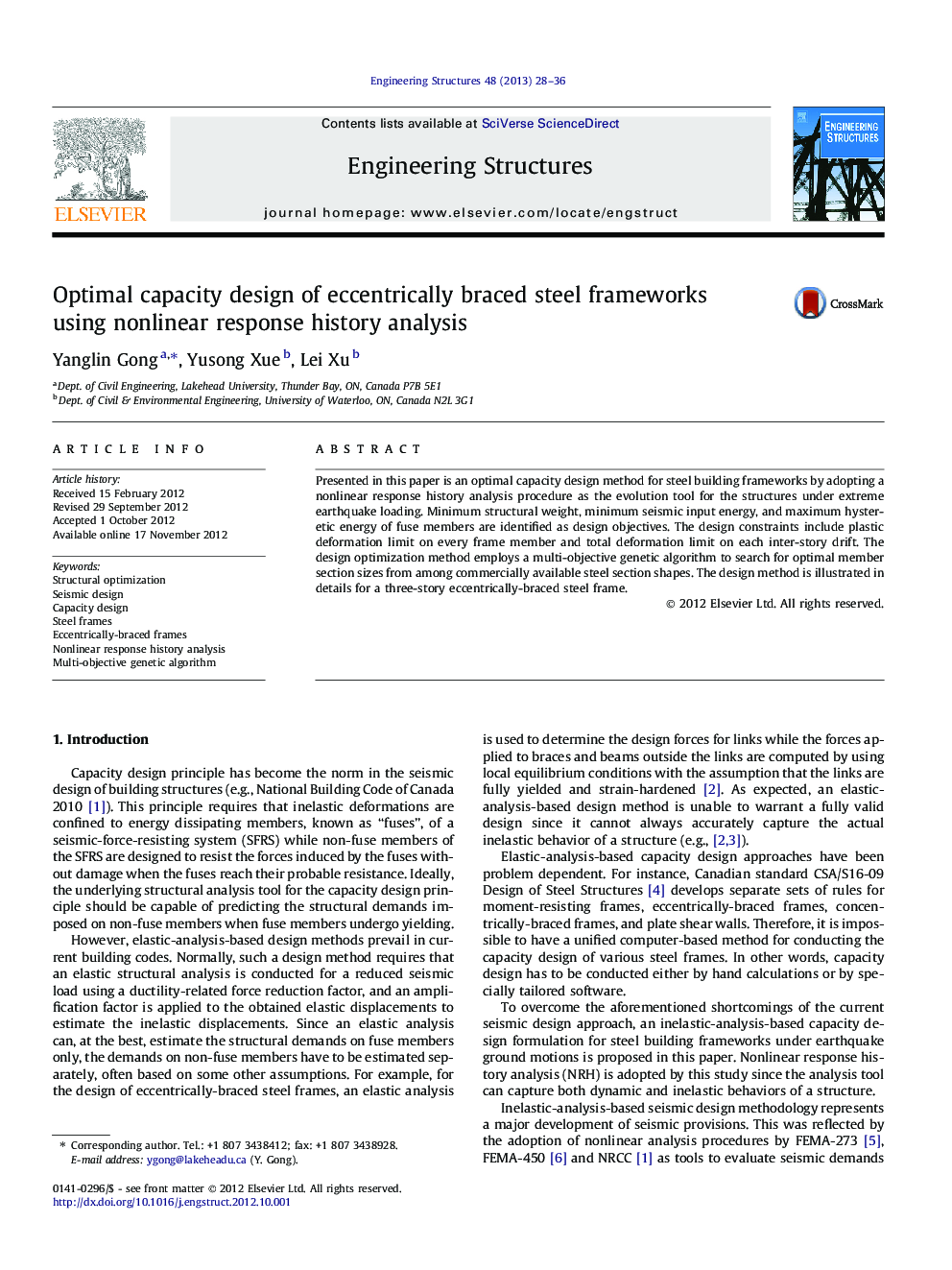| Article ID | Journal | Published Year | Pages | File Type |
|---|---|---|---|---|
| 267242 | Engineering Structures | 2013 | 9 Pages |
Presented in this paper is an optimal capacity design method for steel building frameworks by adopting a nonlinear response history analysis procedure as the evolution tool for the structures under extreme earthquake loading. Minimum structural weight, minimum seismic input energy, and maximum hysteretic energy of fuse members are identified as design objectives. The design constraints include plastic deformation limit on every frame member and total deformation limit on each inter-story drift. The design optimization method employs a multi-objective genetic algorithm to search for optimal member section sizes from among commercially available steel section shapes. The design method is illustrated in details for a three-story eccentrically-braced steel frame.
► Design optimization of steel building frames using nonlinear time history analysis. ► To minimize cost and input energy and to maximize hysteresis energy of fuses. ► A unified capacity design method for seismic design of steel frameworks. ► A design example of a three-story eccentrically braced frame is demonstrated. ► To compute seismic energy using the structural responses from an existing program.
